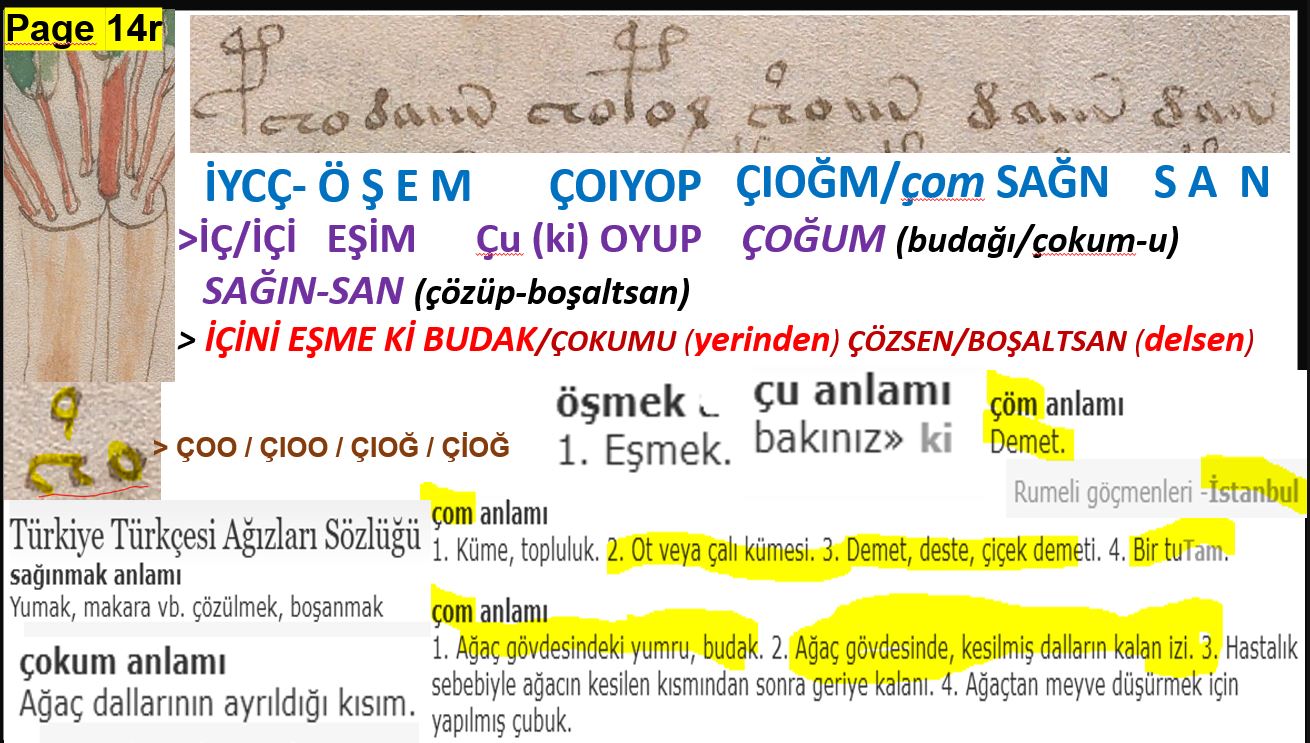İÇ/İÇİ EŞİM Çu OYUP ÇOĞUM SAĞIN-SAN

İÇ/İÇİ EŞİM Çu OYUP ÇOĞUM SAĞIN-SAN
Original-Latin : İYCÇ- ÖŞEM ÇOIYOP ÇIOĞM/ÇÖM SAĞN SAN
Transcript :
Yazarın 14v sayfasında yazdığı ilk satırda şu ifade bulunmaktadır:
"İYCÇ- ÖŞEM ÇOIYOP ÇIOĞM/ÇÖM SAĞN SAN". Bunu günümüz diline transkripsiyon çeviri biçiminde ve fonetik değerce yakın sözcüklerle yaklaştırsak bu satır şu biçimi alacaktır:
"İÇ/İÇİ EŞİM Çu (ki) OYUP ÇOĞUM (budağı/çokum-u) SAĞIN-SAN (çözüp-boşaltsan)".
Bunun da anlamı şudur:
"İÇİNİ EŞME Kİ BUDAK/ÇOKUMU (yerinden) ÇÖZSEN/BOŞALTSAN (delsen)". Bu satırın yazıldığı sayfada yapılan çizime bakıldığında bir bitkinin ana gövdesi muhtemelen budağından kesilerek ve ona delikler açılarak bir başka bitkinin dalları buraya aşılanmış görünüyor. Dolayısıyla bu bir çizim sözcük örtüşmesi/eşleşmesi olarak kaydedilmiştir.
____ / ____
The first line written by the author on page 14v contains the following expression:
"İYCÇ- ÖŞEM ÇOIYOP ÇIOĞM/ÇÖM SAĞN SAN".
If we were to approximate this to modern language in transcription translation form and using words with similar phonetic values, this line would take the following form:
"İÇİÇİ ÖZİM Çu (ki) OYUP ÇOĞUM (knot/bundle/from the branch part of the plant) SAĞIN-SAN (to solve / to empty)".
This means: "To dig into the inside so that you can empty it by making holes in the knot parts/area"
Looking at the drawing on the page where this line is written, it appears that the main stem of a plant was probably cut at its knots, holes were drilled in it, and branches of another plant were grafted onto it. Therefore, this drawing was recorded as a word overlap/match.
